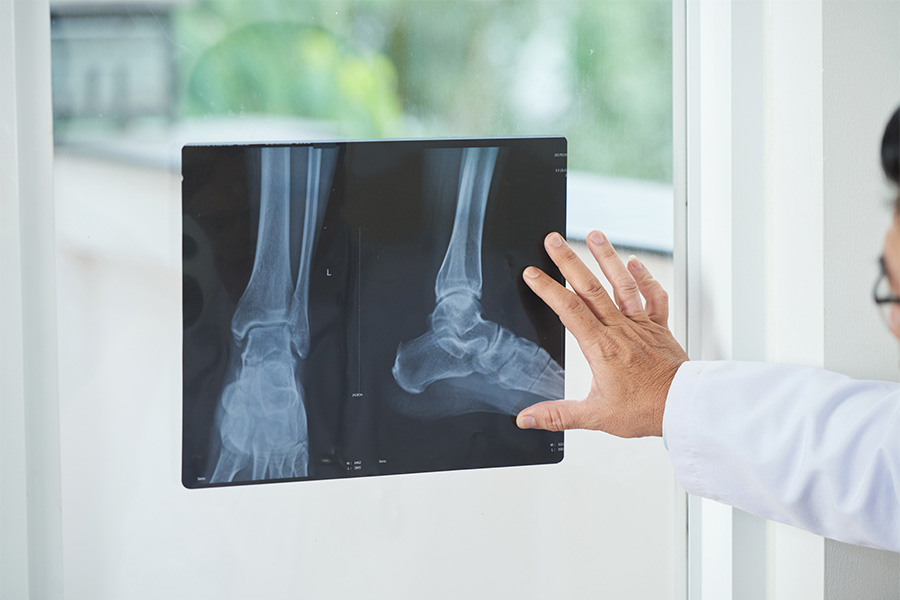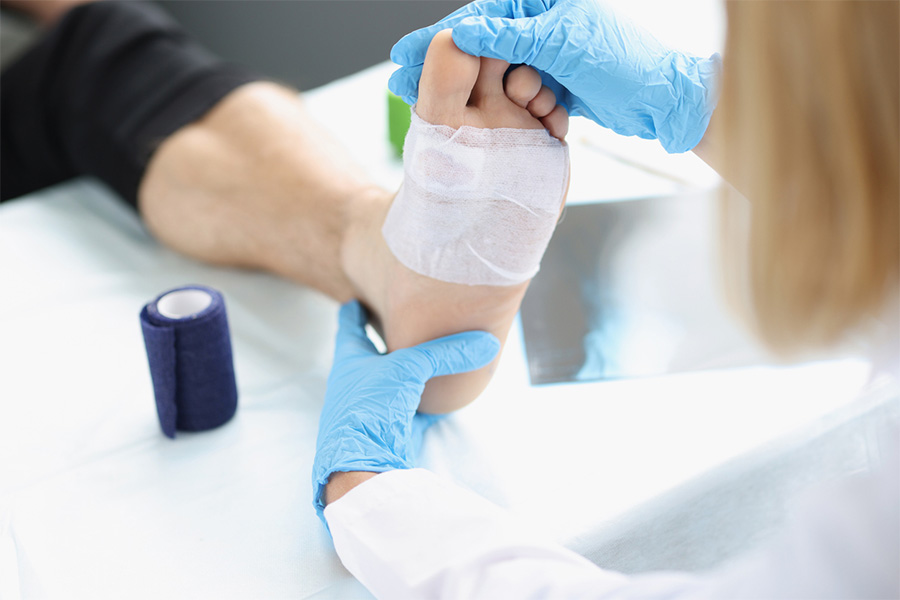Heel pain is a common foot problem and depending on the cause, it can often be treated successfully with conservative treatments such as rest and over-the-counter medication. However, if the pain becomes worse or fails to improve, further investigation by a foot specialist is recommended.
Although heel pain can sometimes develop without an obvious cause, there are a number of factors that increase the likelihood of developing this type of pain, including wearing shoes that provide little to no support or cushioning, certain types of exercise, or increasing your exercise level too fast, obesity, aging, and occupations that involve a lot of time on the feet. Plantar fasciitis and Achilles tendonitis are also common causes of heel pain.
Plantar fasciitis often causes a stabbing type of pain beneath the heel and is caused by inflammation of the plantar fascia – the thick band of tissue that runs along the bottom of the foot. Symptoms are often worse in the morning and after long periods of standing. It may be difficult to raise the toes of the affected foot. Plantar fasciitis can also cause heel spurs, which are small calcium deposits that cause a bony protrusion at the bottom of the heel bone. Heel spurs can cause sharp pain or a dull aching sensation usually after engaging in physical activity like running or jumping.
Pain associated with Achilles tendonitis usually occurs just behind the heel, where the Achilles tendon connects to the heel bone. It occurs when the Achilles tendon becomes irritated and inflamed, which is usually the result of overuse and degeneration.
Other types of heel pain may be caused by other factors such as arthritis, infection, a fracture, an autoimmune disorder, trauma, or a neurological problem, and may require further investigation to find the exact cause.
Diagnosing and Treating Heel Pain
Treatment for heel pain will depend on the type of condition, location of the pain, and the severity of symptoms. Oftentimes, conditions such as plantar fasciitis can be diagnosed based on medical history, symptoms, and a physical examination. Imaging tests such as an X-ray or MRI may be required to diagnose other conditions such as a stress fracture or arthritis.
Rest and Ice
Heel pain caused by conditions such as plantar fasciitis can usually be treated conservatively with rest and activity restriction, as certain activities can aggravate symptoms and make symptoms worse. Regularly applying an ice pack to the affected foot can also help to reduce swelling, inflammation, and pain. It should be applied every 2-3 hours but for no longer than 20 minutes at a time. You should stop applying ice if numbness occurs. Rolling your foot over a cold or frozen water bottle can also help to soothe the pain associated with plantar fasciitis.
Medications
Pain relief medications, such as ibuprofen and naproxen, can help to ease pain symptoms and reduce inflammation. Steroid injections may also help to provide temporary pain relief for certain conditions.
Physical Therapy
Physical therapy can help to alleviate heel pain. Exercises can help to stretch and strengthen the plantar fasciitis and Achilles tendon. Heel pain can also be aggravated by tight muscles in the foot and calf. Gentle stretching exercises to increase flexibility in the calf muscles can help to relieve pain and tightness.
Custom Orthotics
Custom orthotics can help to prevent and improve heel pain caused by conditions such as plantar fasciitis. Orthotics are prescribed by a podiatrist and are custom-made for your feet to treat your specific requirements, such as a gait or structural problems. Custom orthotics help to position feet correctly and provide appropriate cushioning and support for feet and ankles.
Shock Wave Therapy
A type of shockwave therapy, known as Extracorporeal Pulse Activation Technology (EPAT®), can be used to treat a variety of podiatric disorders including plantar fasciitis and Achilles pain. It is a non-invasive, office-based procedure that involves a unique set of pressure waves, which stimulate the metabolism, enhance blood circulation, and accelerate the healing process to gradually regenerate healthy tissue.
Surgery
If heel pain doesn’t respond to conservative treatments, your podiatrist may recommend surgery, which can help to relieve pressure from a nerve, remove a heel spur, or treat an inflamed tendon.
Treatment for Foot and Ankle Pain in Cincinnati
If you have persistent heel pain, speak to the podiatrists at Cincinnati Foot & Ankle Care for the comprehensive treatment you need. Our foot specialists can effectively diagnose and treat a variety of foot and ankle conditions. To find out more about our services or to book a consultation, call us today at the location nearest you or complete our convenient online appointment request form.
Share

Surgeons can provide both surgical and nonsurgical care.




